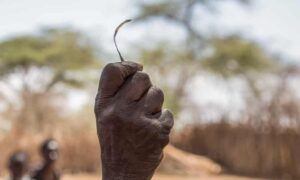
The number of girls and women who have undergone female genital mutilation (FGM) has increased by 15% in the past eight years, according to new data.
Figures released by the UN children’s agency, Unicef, show that more than 230 million girls and women alive today have undergone FGM, compared with 200 million in 2016. The trend is towards girls being cut at a younger age, said Unicef executive director Catherine Russell.
“Female genital mutilation harms girls’ bodies, dims their futures, and endangers their lives,” she said. “We’re also seeing a worrying trend that more girls are subjected to the practice at younger ages, many before their fifth birthday. That further reduces the window to intervene. We need to strengthen the efforts of ending this harmful practice.”
Work to eliminate the practice by the UN’s target date of 2030 would need to be happening 27 times faster than it is now, Unicef said. FGM is not becoming more common globally, but more girls are being born in FGM-practising countries in comparison with the rest of the world.
FGM involves the partial or total removal of the external female genitalia and is a violation of human rights. In 2012 the UN passed a resolution to ban it.
About 60% of FGM cases – 144m – happen in Africa, followed by 80m in Asia and 6m in the Middle East.
Somalia, Guinea, Djibouti, Egypt, Sudan and Mali have the highest prevalence rates. They are also countries dealing with other urgent issues, such as conflict, climate shocks and food insecurity, which make it harder to deliver programmes to support girls, said Unicef.
In the Gambia, a bill to repeal its ban on FGM was tabled in parliament this week, embroiling the country in debate over rights, religion and culture. In Sierra Leone, the practice remains legal despite growing pressure for it to be criminalised. Three girls died during cutting ceremonies in the west African country earlier this year.
Claudia Cappa, the Unicef report’s lead author, said: “Where the practice is concentrated, the majority of women and men are saying that they want the practice to stop … but this growing opposition is not matched with a change in [behaviour].”
